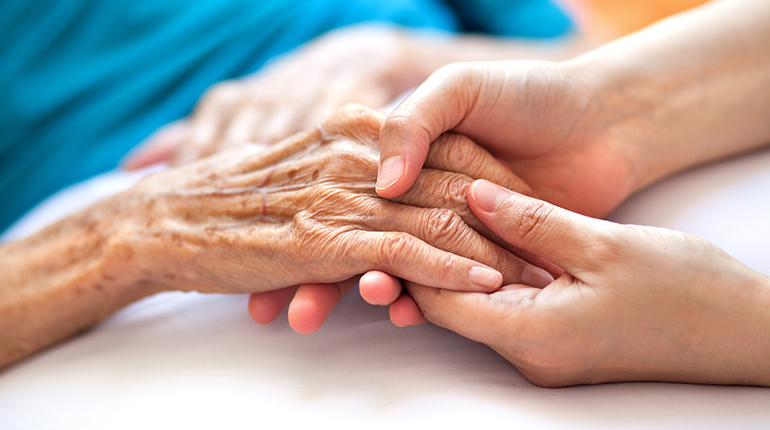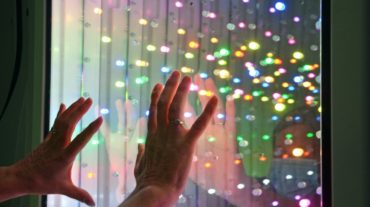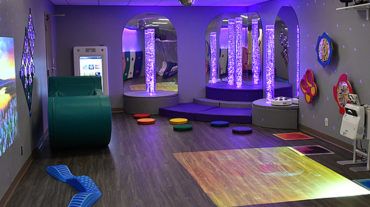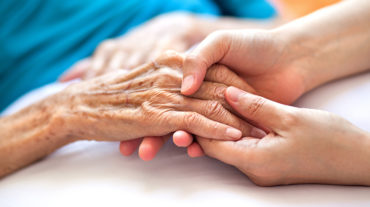By Dana Territo
March 1, 2020
A review in the Journal of Clinical Nursing on the effects of sensory stimulation concluded that most kinds of sensory stimulation reduced agitation, anxiety, aggression, depression and improved the quality of life for those with Alzheimer's.
Sensory stimulation is defined as anything that affects one of our five senses — sight, hearing, smell, taste and touch, including the organs that give us a sense of location and balance.
In short, sensory stimulation is brain stimulation. We interact with the world through our senses, so using the senses can help affected people connect to their feelings and help them cope with negative emotions and behaviors.
Various research studies say there are advantages of nonpharmacological interventions for behavioral issues in those with Alzheimer’s disease and dementia. Sensory stimulation therapies include music, vibrating tubes, fiber-optic string lighting, aroma diffusers, solar effect projectors and plasma balls, which are all shown to improve restlessness, attention span and impulsiveness.
Further, researchers say, caregivers who used this multisensory technology felt it was helpful for reducing agitation and anxiety in their loved ones.
Vibrating tubes or pillows, for instance, help to relax or stimulate. The tubes can be wrapped around the arm or leg, held against the back or neck and offer gentle massages. The pillows can be held in front of the body and “hugged” or placed behind the back.
A solar effect projector provides mood-enhancing lighting effects by creating changing atmospheres and different color sensations on the walls. Similarly, a plasma ball, sometimes called a lamp, dome or sphere, creates a mesmerizing display of colored lights that respond to both touch and sounds. Further, the effects of sensory fiber-optic string lighting can provide relaxing and calming benefits.
Music and infused aromas can assist with decreasing anxiety and promoting better sleep. Essential oils, such as lavender and lemon balm, are used to reduce anxiety and agitation, peppermint to stimulate appetite and bergamot to calm mood and fight depression.
Popular now, especially in long-term care settings, is the Snoezelen Room or a Snoezelen multisensory environment, which are relaxing spaces that provide soothing sensory stimulation. Developed in the Netherlands in the late 1970s by psychologists Ad Verheul and Jan Hulsegge, Snoezelen incorporates all the senses to create a true multisensory experience, giving the person a sense of control and a way to explore and interact in his or her environment, while helping to reduce agitation and anxiety and encouraging communication.
To meet specific needs, the multisensory environment can adapt the lighting, atmosphere and sound, with various textures and textiles placed throughout the setting. For the home environment, caregivers can use the same concept and create a special room with multisensory devices or on a smaller scale, create sensory boxes with items that incorporate the five senses.
Click here to read the full article on The Advocate.





